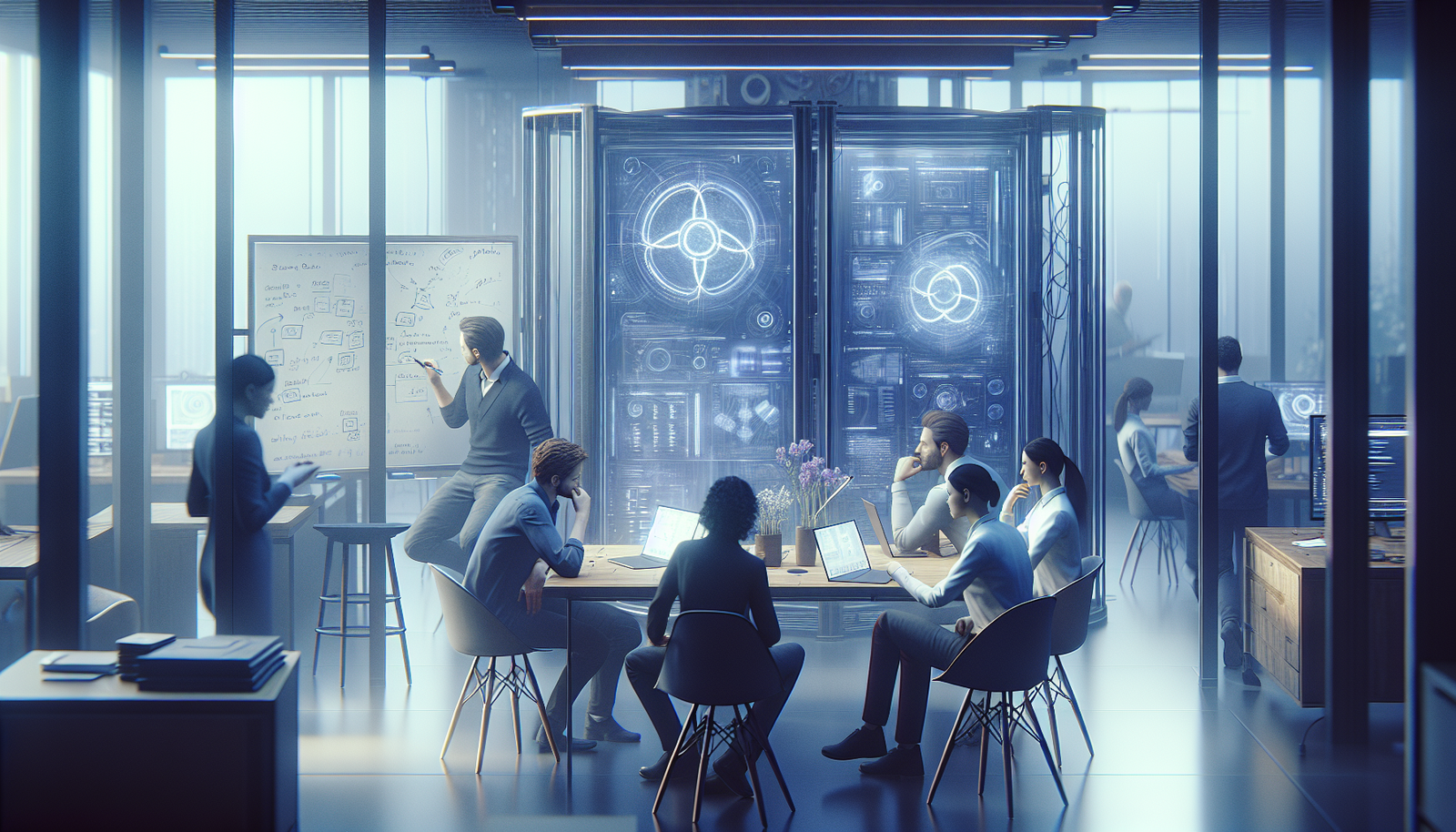OpenAI is currently going through a period of deep turbulence amid financial and strategic uncertainty. Recent management decisions raise questions about its future as a new generation of artificial intelligence models emerges. The threat of unprecedented competition, such as that posed by DeepSeek, challenges OpenAI’s market position.
_The announced hundred departures_ raise essential issues for the company. The internal struggles to maintain the momentum of innovation illustrate the current urgency. Every decision made could redefine the technological landscape for years to come.
Financial turmoil at OpenAI
OpenAI is currently experiencing notable financial turbulence, with forecasts suggesting a deficit that could reach 5 billion dollars this year. Despite its central role in democratizing generative artificial intelligence models, the company faces considerable economic challenges.
Internal restructuring
The recent decision to dismiss Murati, co-founder of the company, has created growing concerns among employees. An overwhelming majority of over 95% of employees are threatening to leave the company, highlighting internal dissent and increasing disagreements within management.
Existential crisis and organizational challenges
The resignation of Ilya Sutskever, co-founder and former chief scientist, accentuates the uncertainties surrounding OpenAI’s future viability, already plagued by an exacerbated climate of tension. A genuine rift is emerging in the team, jeopardizing the strategic alignment essential to its development.
Impact of competition on the industry
The emergence of the artificial intelligence model developed by DeepSeek has come as a true surprise in the tech sector. This model, significantly less expensive than its American counterparts, has caused a drop of over 1 trillion dollars in the market, leaving investors perplexed about the previous valuations of companies like OpenAI and Meta.
OpenAI’s strategic responses
In the face of this competition, OpenAI is preparing numerous changes to strengthen its market position. The leaders have announced their intention to integrate more transparency into the reasoning steps of their AI models, a strategic choice aimed at bridging the gap with DeepSeek’s R1 model.
Meanwhile, OpenAI has recently made its o3-mini reasoning model available to the general public, attempting to compete with the attractive offerings of the Chinese company. The stated goal is not only to maintain its technological lead but also to niche its cost structure against well-established competitors.
Global implications
Beyond the economic implications for OpenAI, the company finds itself in a context where American protectionist trends could weigh on access to the necessary components to fuel its technology. Anthropic, a relevant competitor, has also urged U.S. lawmakers to introduce new restrictions on AI chip exports to hinder the progress of Chinese companies.
This issue has garnered attention from many leaders, including Mark Zuckerberg, who acknowledged the innovations brought by DeepSeek and mentioned potential implementation insights within Meta systems. The mutual understanding of the stakes related to artificial intelligence remains a hot topic for both American and Chinese actors.
Future progress and challenges
While the OpenAI supported by the Stargate initiative aims to mobilize substantial funds to expand its infrastructure, the market reality remains complicated. Ironically, DeepSeek, although considered an innovative player, has limited access to its AI models due to server capacity issues, illustrating the challenges of scalability in the sector.
The dynamics of the AI sector are evolving rapidly, and each actor must not only navigate a competitive market but also anticipate and adapt to an uncertain future. OpenAI’s next steps, as well as its ability to renew its offerings and attract investors, will remain keys to its sustainability.
Frequently asked questions about OpenAI’s discreet turbulence
What are the reasons for the current turbulence at OpenAI?
OpenAI is currently facing significant financial challenges, including a deficit that could reach 5 billion dollars this year, as well as reshuffling within its management.
How has Sam Altman’s departure affected OpenAI?
Sam Altman’s departure has led to a leadership crisis, generating concern among employees and a sense of uncertainty about the company’s strategic future.
What impact do the turbulences at OpenAI have on the AI market?
The uncertainties surrounding OpenAI affect investor confidence and may lead to fluctuations in the market, especially with the emergence of new competing startups like DeepSeek.
Can OpenAI recover from this crisis?
Although OpenAI is facing significant challenges, efforts to restructure the company and secure new investments could allow for a medium-term recovery.
What measures is OpenAI taking to deal with growing competition?
OpenAI is considering reassessing its strategy, including a possible shift towards open-source, and adjusting its pricing models to remain competitive with companies like DeepSeek.
Is the staff at OpenAI at risk of mass departure?
With over 95% of employees threatening to leave, the company is struggling to maintain positive morale and essential stability for its operations.
What are the repercussions for innovation at OpenAI following these turbulences?
Internal claims and a refocusing on management could slow down innovation in the face of emerging new technologies in the AI field.
Are investment returns on hold due to these financial challenges?
With potential significant losses, it is likely that investors are concerned about short-term profitability, which could delay the return on investments.
How does OpenAI communicate with its investors during this crisis?
OpenAI maintains an open dialogue, but management is facing internal tensions, complicating the implementation of a transparent and coherent strategy towards investors.






